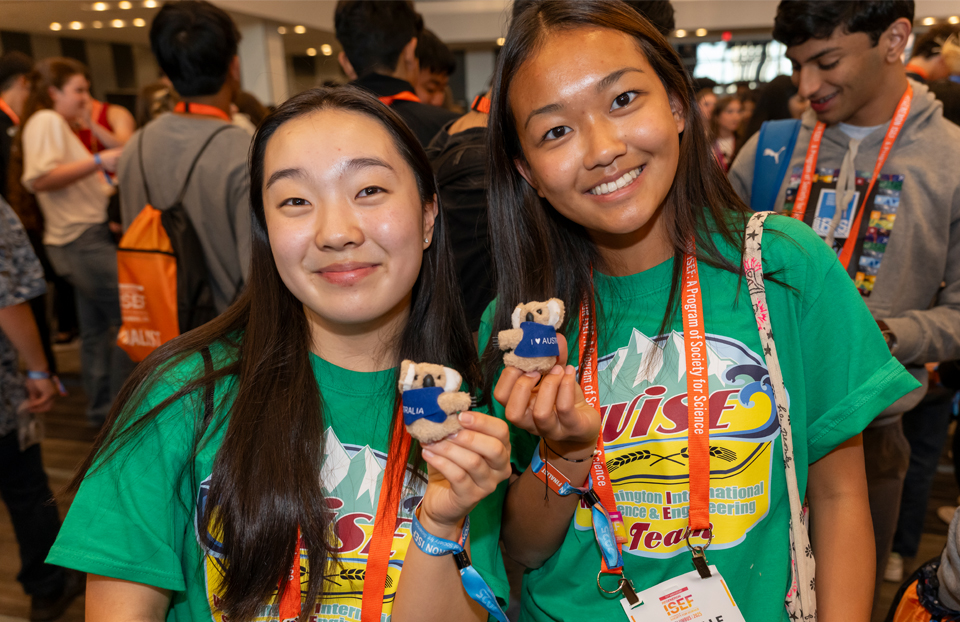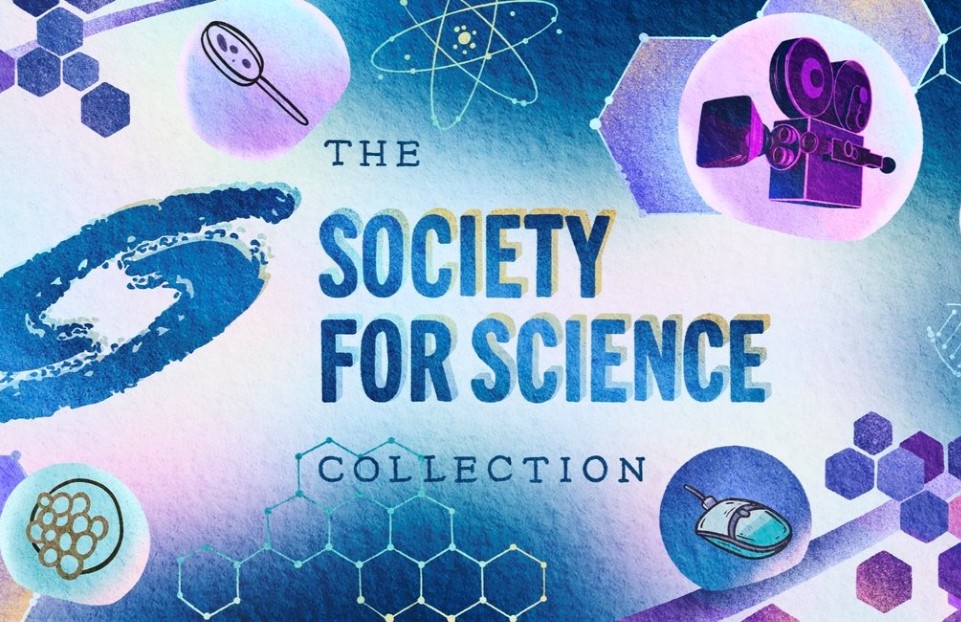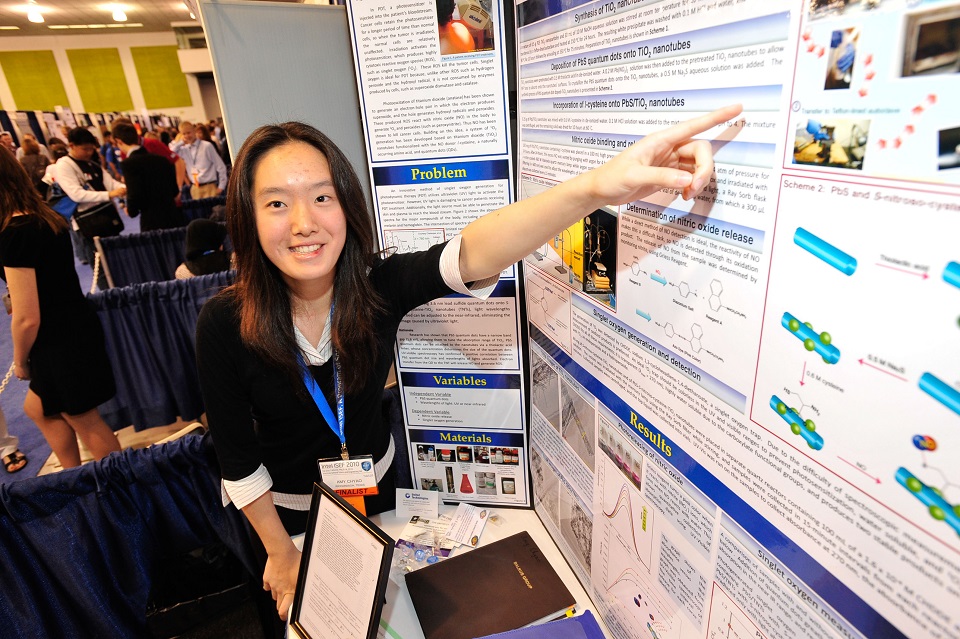Broadcom MASTERS International, ISEF
From the sea bed to the stars
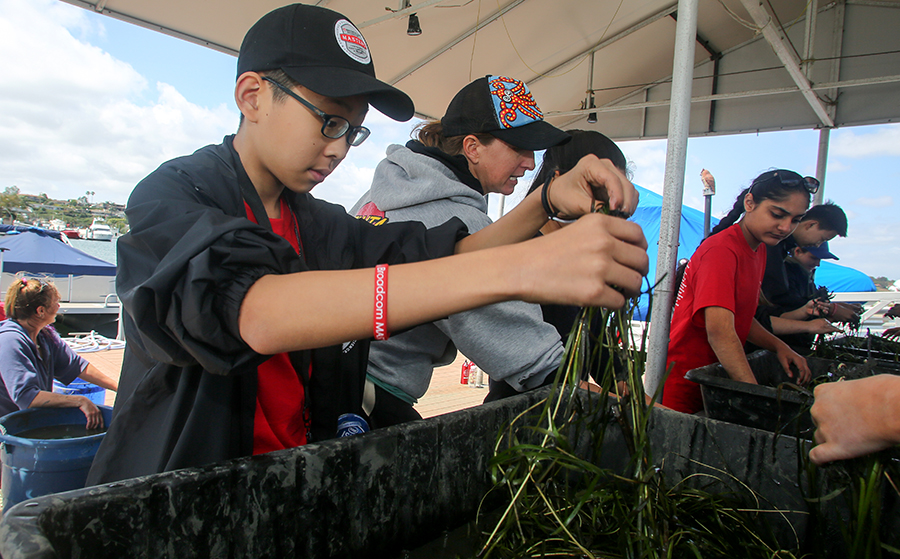
By Sophia Stuart
The excitement at the back of the bus was mounting. Twenty-six middle schoolers, called delegates, all rising global stars in math, applied science, technology, and engineering, had just flown into Los Angeles from around the world to participate in Broadcom MASTERS International 2017. They’d come from a total of 19 countries, including Australia, Brazil, China, India, South Africa, and the UK.
Smartly dressed in red T-shirts and baseball caps, tentative connections were being formed across cultural and language barriers. It was going to be a packed week of tailored programming: heading out on a boat with marine conservationists, meeting engineering professors in a top university lab, learning about the American West, going behind the scenes with scientists at a world-class museum, and gazing into the sky with NASA JPL rocket scientists at an observatory.
As the bus pulled into University of California, Irvine (UCI), the first stop on the week’s itinerary, Paula Golden, President of the Broadcom Foundation, explained the focus of the program: “The Broadcom MASTERS International brings together students who are often not just the brightest in their school, but in their country and we give them an opportunity to be expressive, cool, cute, and funny — as well as be young scientists. Through putting them into teams, they get to associate with others like them, from all over the world, talking the one common language they share — science.”
The Broadcom MASTERS International brings together students who are often not just the brightest in their school, but in their country.
After a tour through the UCI campus (Tolkien fans alert: undergraduate housing units are named after landmarks in Middle Earth), the delegates built 3D models ready for laser cutters and tested multiple sensors on Arduino circuits to capture data points on plant growth.
“Science is Everywhere” emerged as the theme of the week: “Even in the humble hamburger,” Gregory Washington, Dean of the UCI Samueli School of Engineering, told the delegates, as he detailed the engineering required in each stage of food production.
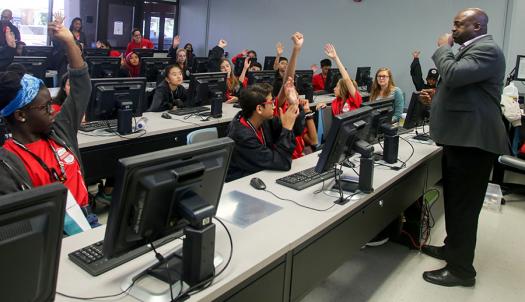
This was an important point. Many of the Broadcom MASTERS International delegates came with very focused concepts of what scientists do — the usual job titles that come to mind. But, by Friday, it was clear they were going to have a much broader, more exciting view of their potential futures, due to the many activities featured during the week.
Jun Young Kim, 13, from South Korea, was blown away by the modernity of UCI’s curriculum: “They have an e-sports program here!” he said, amazed. Eugene Lek, 13, from Singapore, was also impressed by UCI: “I really enjoyed the 3D modeling — I’d never done that before.” Ana Teresa Arroyo Flores, 12, from Mexico, could see future applications of what they’d learned that morning: “I want to go to Japan to study anime and manga, so I really liked this 3D modeling activity because it included design, you could make choices about color, and so on.”
An hour later everyone was on a boat, heading across Newport Harbor, with Discovery Cube’s Ocean Quest’s environmental scientists, engaging in hands-on marine conservation experiments. The delegates toured breeding tanks full of electronically-tagged white sea bass in a stocks replenishment program (while California brown pelicans and sea lions looked on hungrily), analyzed mud samples, and carefully separated plant vegetation from animal life to preserve eelgrass. Divers stood by, ready to replant it in the harbor.
Many of the delegates came from land-locked locations, so a boat trip was a rare treat. Ashini Modi, 13, from the United States, said, “I’d never seen a sea lion before! It was also the first time I’d done something like this. I liked collecting mud and identifying different organisms in there. I think I might want to study a bit more in this area.”
James Fagan, 10, also from the U.S., agreed. “I liked learning about the oceanic ecosystems and how scientists can affect change. I also found the red worm interestingly weird,” he said. Heviinash Parugavelu, 13, from Malaysia, joined in: “Separating the algae from centipedes and worms was so interesting — I didn’t know we would be exploring these things with Broadcom MASTERS International — it’s an eye-opener for me.”
I liked learning about the oceanic ecosystems and how scientists can affect change.
The next day, at the Autry Museum of the American West, the delegates met even more scientists, this time nearer their own age — some of the alumni from previous years’ Broadcom MASTERS (the competition partnership program to Broadcom MASTERS International). Over breakfast there was plenty of time to ask questions about alumni’s award-winning project outcomes, get college application advice (several are now studying at top schools such as Stanford and MIT), and receive guidance on future careers (impressively, alumni spoke about interning at SpaceX and Google).
During the tour of the museum, Lehloogonolo Victoria Msuma, 13, from South Africa, said she was inspired to travel. Where in particular? “Australia!” she said. Why? “Because I’ve loved hearing Eliza Martin, who is on the same team as me, talk about her country,” she said. It was clear international friendships were being formed — which is great news for future cross-border scientific collaboration.
Later, to the stars — not those in the nearby Hollywood Hills, but in space. On the lawn of Griffith Observatory, Goutam Chattopadhyay, a Senior Research Scientist at NASA’s Jet Propulsion Laboratory, amazed students with tales of developing scientific instruments for NASA’s current space exploration. David Garrett, a Distinguished Engineer at Broadcom in the Mobile Connectivity Division, then joined Chattopadhyay, and they took the delegates around the Griffith Observatory, pointing out important milestones in the discovery of worlds beyond our own.
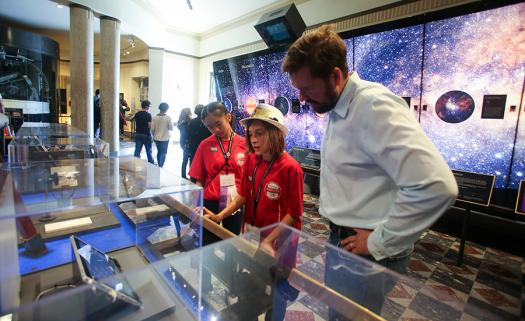
It was clear they — and the artifacts at the Observatory — sparked a great deal of curiosity. Many of the delegates, including Pei-Yun Chang, 14, from Taiwan, and Urjwal Aradhya, 14, from India, said they’d now like to pursue space science in their careers. Maria Isabella Schneider, 15, from Brazil, agreed: “I really love to watch stars and it was amazing to see the things that have come to Earth from space — like meteoroids.”
Finally, at the Getty Conservation Institute (GCI), with breathtaking views over L.A. — from the skyscrapers of downtown to the Pacific Ocean — the delegates got privileged access to behind-the-scenes science labs at the world-famous art museum. They met scientists involved in a wide range of vital cultural preservation, utilizing the latest techniques and equipment. Karen Trentelman, head of technical studies research at GCI, demonstrated XRF spectroscopy to identify the origin of red paint on the material wrapped around the ancient Herakleides mummy. Akram Elogili, 13, from Egypt, then interpreted several hieroglyphics to the delight of fellow delegates. Beril Bicer-Simsir explained how lime-based hydraulic repair mortars are a focus of historic masonry conservation and, working on a more recent project, Alan Phenix, head of treatment studies at GCI talked the delegates through the scientific scholarship required to conserve Jackson Pollock’s Mural.
These students are multi-talented as scientists, but we also want to celebrate their other skills.
During the week, activities were not just focused on external field trips, but also on getting to know each other. Alongside discussing their science projects, which got them selected for Broadcom MASTERS International, there was a fun game of bingo, devised by Erin Cummins, Broadcom MASTERS Specialist at the Society for Science & the Public. She explained its purpose: “Before they came to L.A. we asked them to fill out surveys online, telling us about themselves, and we drew up a bingo card with lots of cool facts they might not know about each other. These students are multi-talented as scientists, but we also want to celebrate their other skills, so they get to know each other on a more fully-rounded, yet fun, level.”
Initially shy, many of the group’s participants opened up as the activities unfolded and alliances started to form. By the last day, on the bus back to the hotel, they were all rapping in flawless Spanish, no less, to the current chart-topper remix of Puerto Rican star Luis Fonsi’s Despacito (ft. Justin Bieber).
This is a shared experience which connects them to each other throughout the rest of their lives.
Smiling as she heard the singing at the back of the bus, Allie Stifel, the Society’s Director of the Regeneron Science Talent Search and the outgoing Broadcom MASTERS Program Manager, talked about being with the program for the past five years. She’s seen how alumni have kept in touch with program’s organizers — and each other. “This is a shared experience which connects them to each other throughout the rest of their lives,” she said.
Paula Golden agreed, saying, “We are creating an international cohort of Broadcom MASTERS International — that goes way beyond these few days.”
